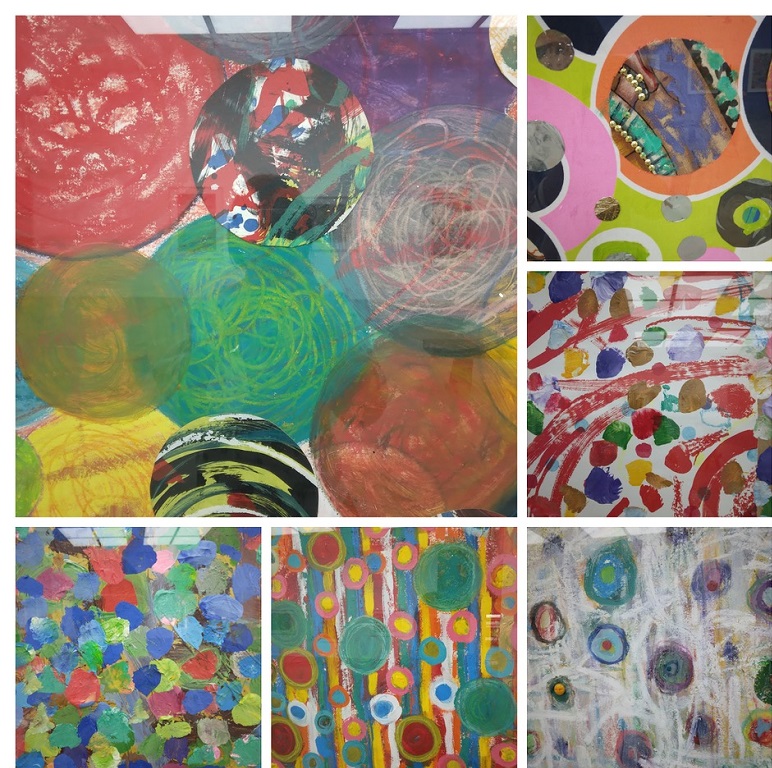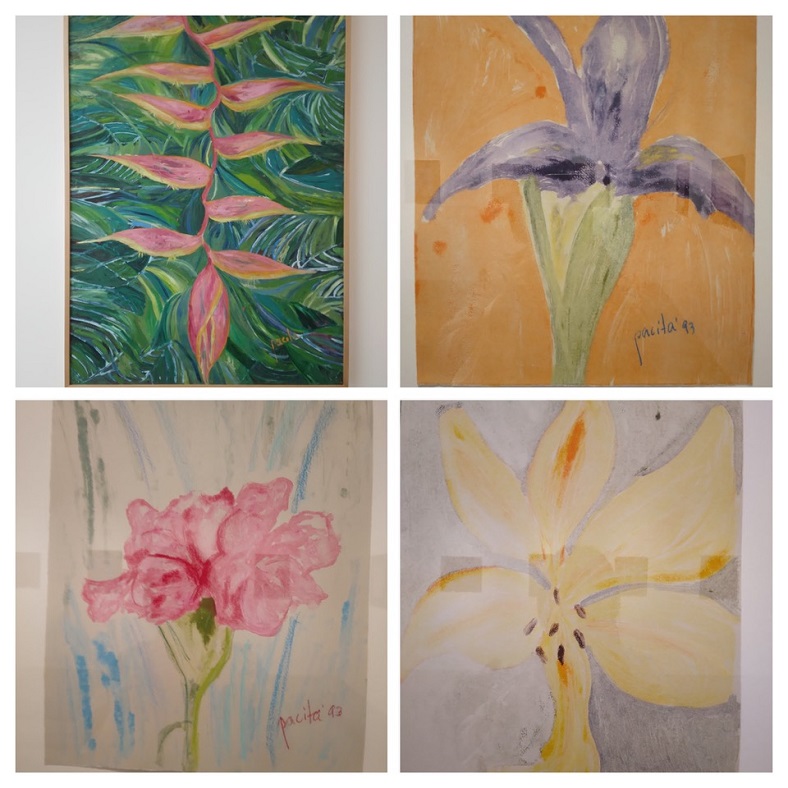
“I truly believe that, as an artist, I have a social responsibility for my painting, to try to make our world a little better.” —Pacita Abad
A whirlwind of color, color, and more color hits you in Pacita Abad’s Love is Like a Heatwave, a recent exhibition at Silverlens Galleries, celebrating the 20th anniversary of Circles in My Mind (Oct. 2003-Jan. 2004, CCP), Abad’s final exhibition before her death in December 2004.
In this exhibit, large collages of circles with vibrant colors drawn, painted, and cut out dominate the main gallery space. In Abad’s words: “Circles have always been in my work and they are direct, simple, modern, universal, intimate, fascinating, and playful.”
Swirls of red in all direction run throughout the canvas, filled with imperfect blobs of reds and pinks, electric blues, and greens in the titular piece, Love is Like a Heatwave (2004). Like chasing a tornado of colors, one can almost expect the colors to run out of the canvas and into the exhibit space.

Like her trapunto paintings, these abstract works embody Abad’s lifetime experience in meeting peoples and communities marginalized by society and yet, they have strongly maintained their own cultural traditions and their use of rich colors.
Floral contemplation
Included in the exhibit are Abad’s rarely exhibited floral-on-oil monoprints done during Abad’s stay in Jakarta during the late 1990s. Oil paints of flowers in graceful compositions are transferred on paper with hand carved Balinese frames. They provide a striking contrast to the exuberance of colors in Abad’s works.
In delicate pastels, the flowers offer some quiet contemplation, an iris, a yellow lily, a pink champagne flower, lilac and daffodils.


Singapore residency
Rarely exhibited and mostly unseen by the public, the works on paper had been produced at the Singapore Tyler Print Institute (STPI) in 2003. One of the first artists selected for the three-month residency, Abad created Circles in My Mind, a series of 56 mixed-media paper works that incorporated lithography, relief, screen printing, and hand-colored paper pulp. Rather overwhelmed, Abad recalled that the paper medium became extensions of her paintings, where she collaged buttons, beads, and fabrics onto prints.
The artist
Pacita Abad (1946-2004) is well known for her large-scale trapunto paintings, a form of quilted painting them made by stitching and stuffing the canvasses, as opposed to stretching them over a wood frame. She also painted on the canvasses and embellished them by hand with layers of traditional cloth, shells, buttons, beads, lace, ribbons, rickrack, mirrors, sequins, and other materials.
In 1985, she received the Ten Outstanding Young Men’s Award, the first woman to be given in TOYM’s 26-year history.

She had visited more than 60 countries across six continents: Sudan, Yemen, Papua New Guinea, Bangladesh, Afghanistan with longer stays in Indonesia, the Philippines, and Singapore. Always learning from the peoples she had met, she also interacted with local artistic communities, where she drew from their traditions, techniques, and materials into her own art practice such as Indonesian batik, Korean ink brush painting, or Rajasthani shisha embroidery.
Abad’s trapunto paintings include primitive and colorful masks, underwater scenes, the immigrant experience, and abstract compositions.
Learning from the locals
In particular, Abad was fascinated with the textile and weaving traditions of the peoples of Cordillera and Mindanao, the Chakma peoples of Burma, Haiti and its Afro-Carribean textile traditions. From the highlands of Papua New Guinea, and the peoples of Goroka, Lae, Mount Hagan, and Madang, she incorporated locally sourced cowries shells, bones, and feathers into her trapuntos.
In Indonesia, Abad learned about traditional shadow puppets or wayang, and she incorporated batik and ikat elements into her art practice. In a Bangladesh refugee camp, she learned the stitched art of kantha. In Rajasthan, India, its textile and garment tradition inspired her to include beads, mirrors, tin, and elaborate embroidery into her works.

In 1984, Abad opened her first major solo show, Pacita Abad: A Philippine Painter Looks at the World, at the now defunct Museum of Philippine Art in Manila. Curated by Arturo Luz , it included over 120 works enriched by her travels to Bangladesh, Cambodia, Sudan, Thailand, and the Philippines.
Abad revisited
During her lifetime, Abad created over 5,000 artworks, and even painted the gray 55-meter-long Alkaff Bridge with a team, a few months before her death. Known as the Singapore Art Bridge, it has 2,350 multicolored circles.
In 2023, the Walker Art Center in Minneapolis held the first ever retrospective on Abad, spanning the artist’s 32-year career. It includes over 100 works showing her experiments in different mediums, including textiles, works on paper, costumes, and ceramics which has travelled to the San Francisco Museum of Modern Art, MOMA PS1 in New York until September 2024, and Art Gallery Ontario, Toronto in 2024-2025.
Launched during the Walker exhibition, Pacita Abad (2023) is the first major publication on Abad that surveys her three decades of art practice, and edited by Victoria Sung.
Images by Silverlens Galleries, R.C. Ladrido, and Google Doodle

